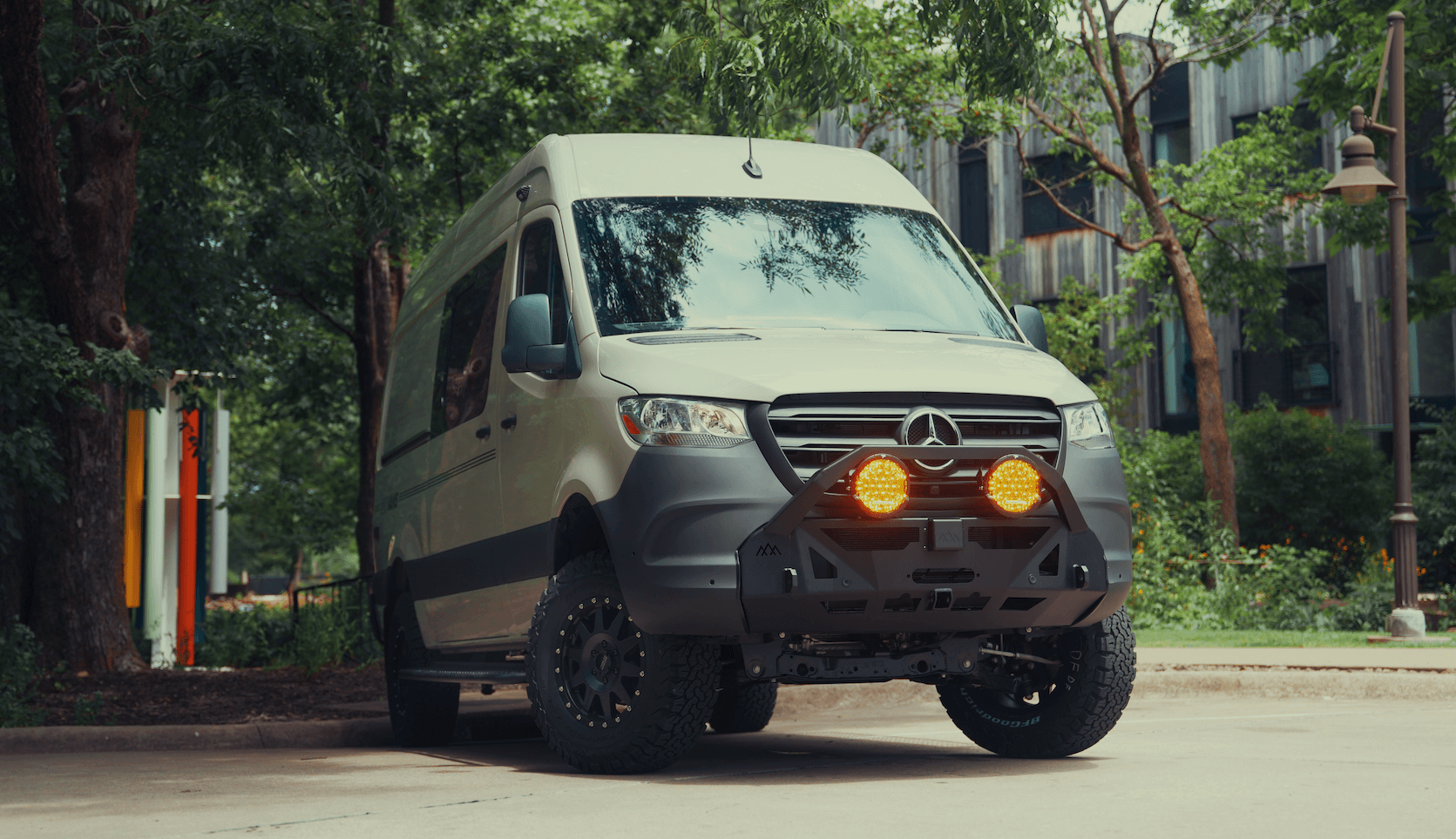Recreational Vans

Charging a 48 volt battery bank from a Ford Transit alternator is possible, but not by wiring the pack straight to the factory system. The Transit uses a 12 volt smart alternator managed by the engine control module. To safely charge a 48 volt bank, you either add a 12 to 48 volt DC to DC charger or install a dedicated 48 volt alternator with an external regulator. Both paths can work well when sized and protected correctly.
Modern Transit platforms use a computer controlled alternator that varies output based on engine state, battery state of charge, temperature, and electrical demand. That means voltage at the battery bus may swing rather than sit at a fixed 14 plus volts. Those fluctuations help fuel economy but complicate direct charging of any house bank, especially a 48 volt system.
Alternators produce heat in proportion to current. Long idling with a high electrical load can push temperatures past safe limits and shorten alternator life. Adding airflow, using high idle when available, and limiting charge current help keep components within spec. It also matters where you drive. Continuous highway miles deliver steadier cooling than creeping through town.
Transit alternators come in several output ratings depending on engine and options. Even a 250 amp 12 volt unit has real world limits because much of that current is reserved for chassis needs. Plan your house charging draw so the alternator is not pinned at high output for long stretches.
There are two common strategies. The first is a 12 to 48 volt DC to DC charger that boosts voltage while limiting current. The second is adding a secondary alternator configured for 48 volt charging with an external regulator tuned for your chemistry. Choosing between them depends on battery capacity, desired charge rate, duty cycle, and budget.
A DC to DC charger is straightforward to integrate. It accepts the alternator’s 12 volt output and steps it up to the correct charge profile for a 48 volt lithium or AGM bank. Because power is conserved, input current is higher than output current. For example, pushing 20 amps into a 48 volt bank is roughly a 1000 watt load. Accounting for efficiency, the alternator might see around 90 to 100 amps at 12 to 13 volts. That is significant and must be fused and wired appropriately.
A dedicated 48 volt alternator with an external regulator provides higher continuous power when you need rapid replenishment for large banks or frequent high draw loads. This setup often uses a custom bracket, a matched pulley, and a regulator that reads battery voltage and temperature to maintain a proper profile. It reduces conversion loss and gives you better control of alternator temperature through current limiting and field control.
Before choosing hardware, do a quick energy budget. A typical 48 volt lithium bank might be 100 to 200 amp hours, or about 5 to 10 kilowatt hours. If you want to recover half that in a few hours of drive time, alternator sourced charging must deliver sustained kilowatts. That is possible, but you need to match component ratings to your expectations.
Wire sizing is driven by current and run length. Because boost converters pull heavy current on the 12 volt side, oversize the input cables and keep runs short to reduce voltage drop. Use marine grade tinned copper where possible, with quality lugs and adhesive lined heat shrink. Protect both ends with properly rated fuses or breakers positioned as close to the power source as practical.
Isolation matters. An isolated DC to DC charger prevents ground loops and reduces noise on the vehicle electrical system. Ignition sense wiring ensures the charger only runs when the engine does. A start battery low voltage cutout protects you from a no start situation.
Coordination with your battery management system is essential. Lithium iron phosphate packs typically charge between about 54 and 58 volts depending on the cells and BMS settings. Make sure your charger or regulator supports the correct absorption and float voltages, and respect the max charge current recommended by the manufacturer. Temperature sensing on the battery and alternator helps the system dial back when conditions get hot.
Strong charging systems are like plumbing. Flow rate, pipe size, and valves must match or you end up with pressure spikes and leaks. When the pieces are balanced, the result is quiet, predictable energy every time you roll.
Bold move gear often leads to bold power needs. If you plan heavy air conditioning, induction cooking, or fast tool charging, a 48 volt architecture with an alternator charging path keeps the lights on when the sun does not.
Ready to translate this into a dependable build. A thoughtful plan, the right hardware, and careful integration will make your Transit feel like a rolling power plant.
Work with Transit experts for 48 volt charging
If you want a Transit that charges a 48 volt bank safely and efficiently, our team designs and installs complete systems that match your travel style. We plan the alternator path, specify the correct regulators or DC to DC hardware, and integrate solar and shore so your power stack works as one. We validate voltage drop, verify thermal headroom, and deliver a clean handoff so you understand your system from day one.
Form the picture of your ideal setup, then let us turn it into a finished rig you can trust.
Tell us about your van, battery capacity, and power goals. We will build a Transit charging plan that fits your route and your rhythm, then install it with care. Start here:
Ready to power serious off grid living from your Transit. Tell us how you travel and we will design a safe, efficient 48 volt charging system that fits your rig and your routes. Fill out the form to start your custom build discussion today.
ADDRESS:
6159 E Huntsville Rd, Fayetteville, AR 72701
PHONE:
(479) 326-9200
EMAIL:
info@ozkvans.com